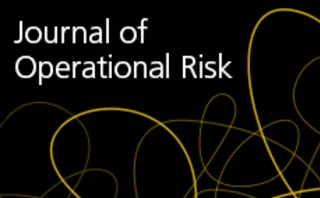Technical paper/Credit ratings
An equity-implied rating model for unrated firms
The authors use Merton's distance to default as the basis for new model with which to assign credit ratings to firms which are not traditionally rated.
Covid-19 and the credit cycle: 2020 revisited and 2021 outlook
This study continues the author’s examination and forecasts as to the impact of Covid-19 on the US credit cycle after one and a half years since the pandemic first began.
Credit migration: generating generators
A stochastic time change helps the modelling of rating transition
Determination of weights for an optimal credit rating model based on default and nondefault distance maximization
This study proposes a credit rating model that accurately identifies default and nondefault companies by maximizing intergroup credit score deviations and minimizing intragroup deviations.
A Libor market model including credit risk under the real-world measure
The authors present a methodology to generate future scenarios of interest rates for different credit ratings under a real-world probability measure.
A joint model of failures and credit ratings
The authors propose a novel framework for credit risk modeling, where default or failure information and rating or expert information are jointly incorporated in the model.
The impact of corporate social and environmental performance on credit rating prediction: North America versus Europe
The authors quantify the extent to which the quality of credit rating predictions improves by integrating measures of corporate social performance (CSP) in an established credit risk model. Their analysis provides comprehensive evidence of the…
Difference between the determinants of operational risk reporting in Islamic and conventional banks: evidence from Saudi Arabia
In this study, the author investigates the operational risk reporting practices of Islamic banking institutions (IBIs) and conventional banks (CBs) in Saudi Arabia. Moreover, the author explores the joint effect of banking characteristics, corporate…
Credit rating analysis based on the network of trading information
In this paper, the authors investigate a credit rating problem based on the network of trading information (NoTI).
Credit portfolio stress testing using transition matrixes
In this paper, the authors propose a new methodology for modeling credit transition probability matrixes (TPMs) using macroeconomic factors.
Issuer bias in corporate ratings toward financially constrained firms
This paper considers whether the rating agency attempts to mitigate the feedback effect through its rating actions. Using Moody’s issuer ratings over 1982–2009, the paper shows that firms with greater external financing constraints are less likely to be…
Reliability and agreement of credit ratings in the Mexican fixed-income market
This paper borrows concepts from measurement, test and psychometric theories to explore the issue of credit ratings in the Mexican corporate bond market.
Loan classification under IFRS 9
Vivien Brunel proposes a method to classify non-defaulted loans in accordance with IFRS 9
Why CDOs work
Collateralised debt obligations have largely gone under the radar since the 2007 financial meltdown, when their market collapsed. Nearly every attempt at explaining the cause of their failure pointed towards flawed assumptions in pricing models and…









